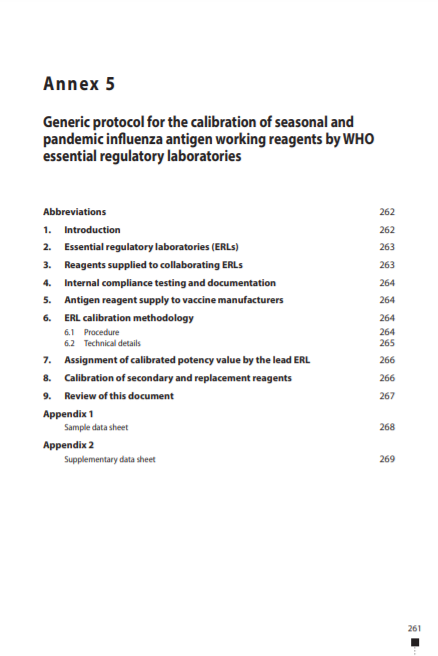Generic protocol for the calibration of seasonal and pandemic influenza antigen working reagents by WHO essential regulatory laboratories, Annex 5, TRS No 979

Overview
High-yield candidate vaccine viruses are developed by collaboration between laboratories involved in developing reassortants and WHO collaborating centres following the strain recommendations. Once developed, these candidate reassortants are sent to WHO collaborating centres for characterization of their antigenic and genetic properties before being released to interested institutions on request. Reference reagents are subsequently developed and standardized by ERLs in collaboration with vaccine manufacturers, and are made available to manufacturers worldwide upon request.
This document provides a description of the generic protocol for the calibration of influenza antigen working reagents used by the four WHO ERLs. It represents the consensus of the ERLs on the process of assigning a potency value to a newly established influenza antigen reagent for use in potency testing of inactivated influenza vaccines. An influenza antigen working (or reference) reagent is a preparation of inactivated whole virus that has been freeze-dried and calibrated as outlined in this document.
The calibration process involves the preparation of a primary liquid standard (PLS) and a large batch of freeze-dried antigen by one of the ERLs. The PLS is distributed to all other ERLs for independent calibration by physicochemical means. Samples of the freeze-dried antigen are distributed to the ERLs at the same time and are calibrated against the PLS using the single radial immunodiffusion assay (SRID; also SRD).
Full version of the WHO Technical Report Series N° 979
